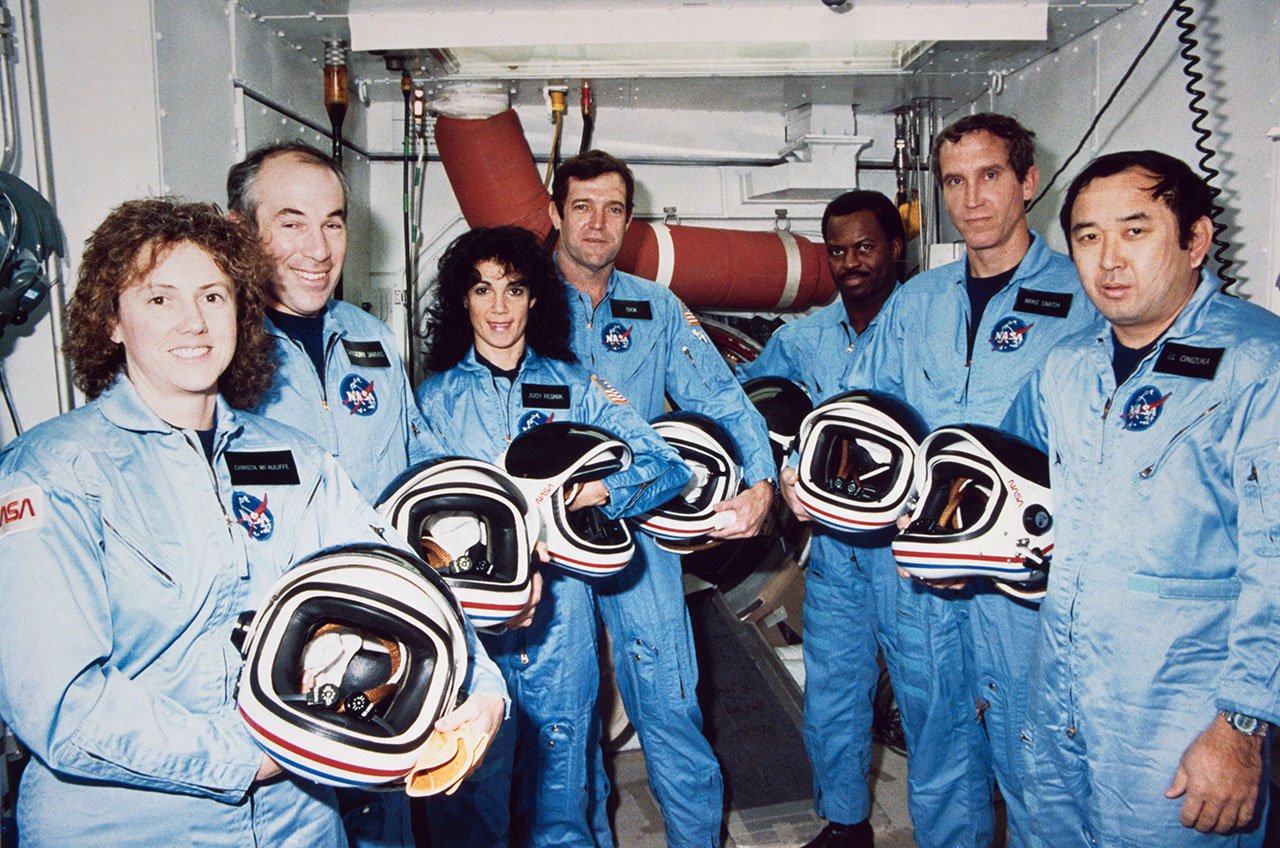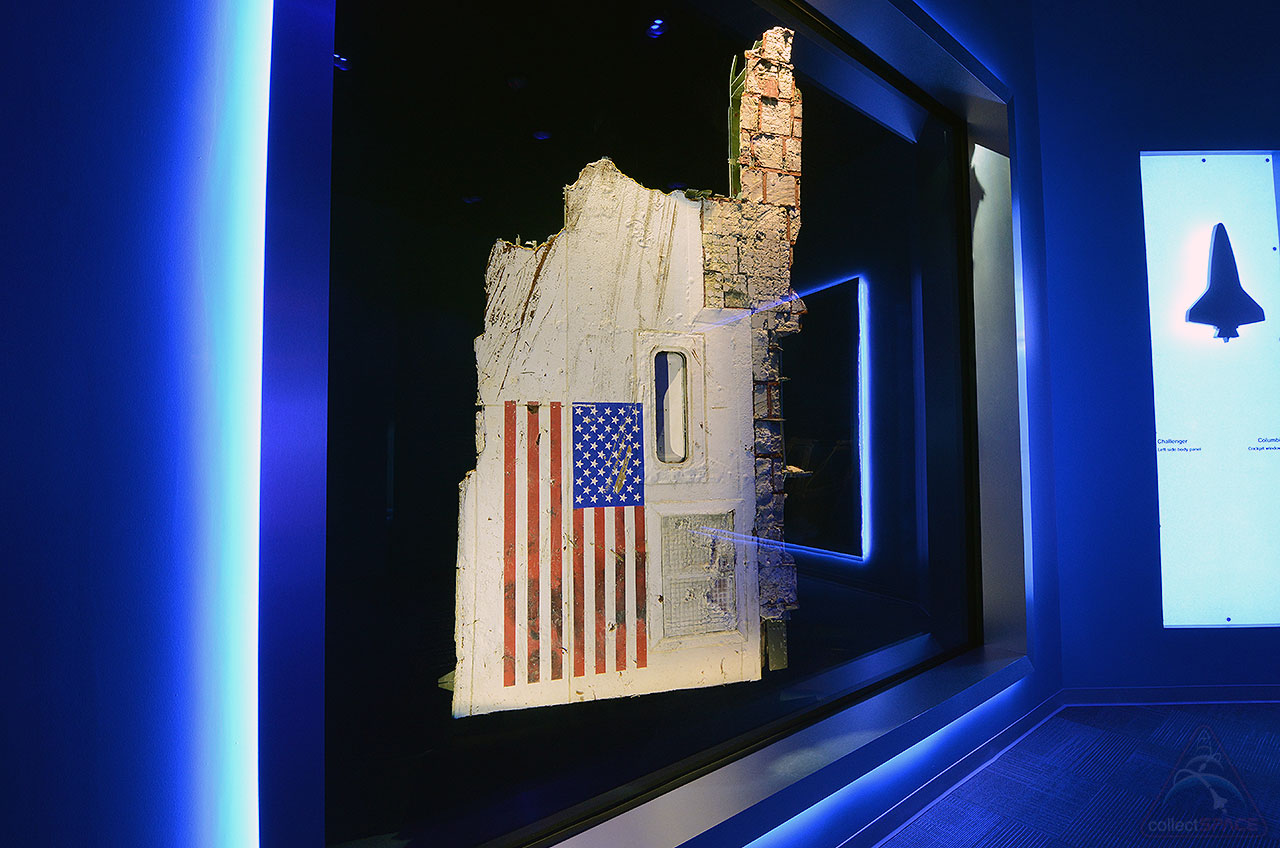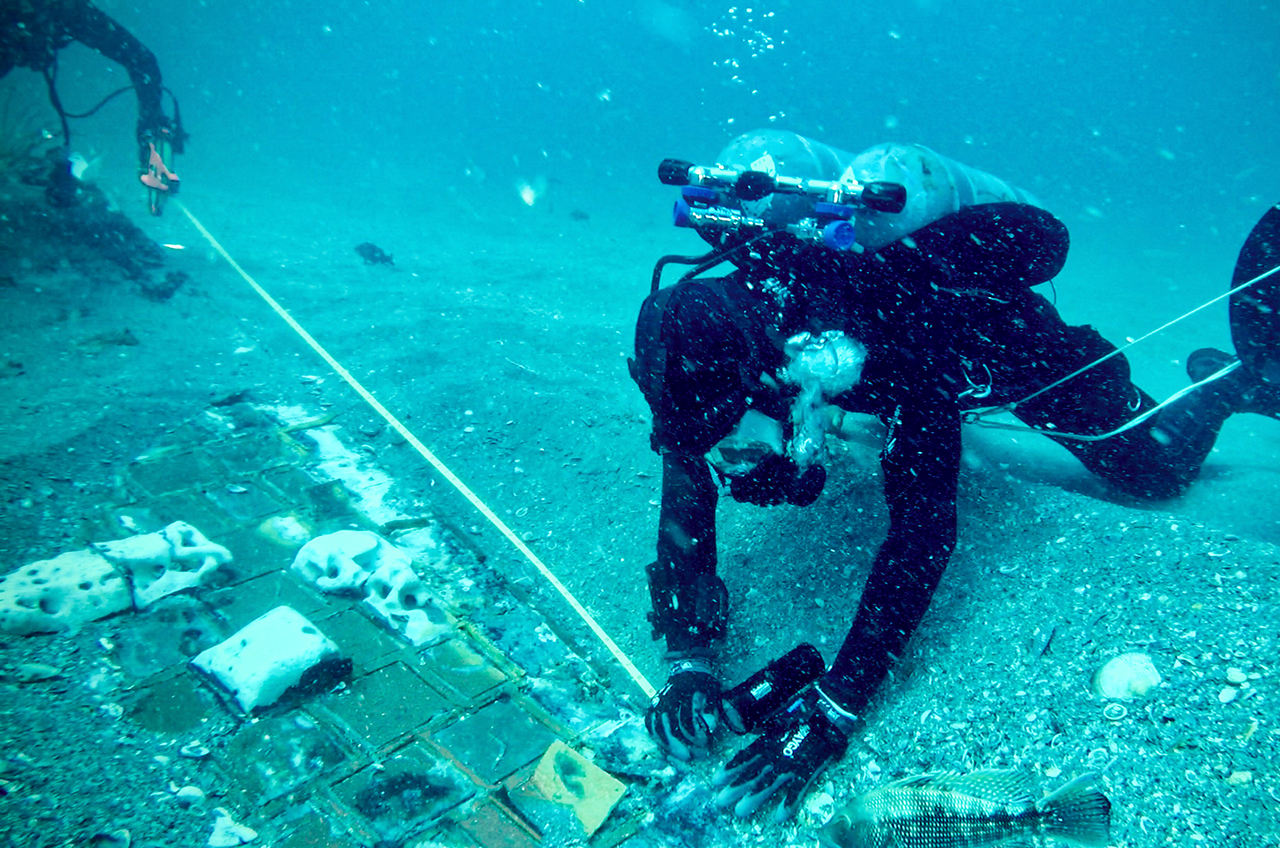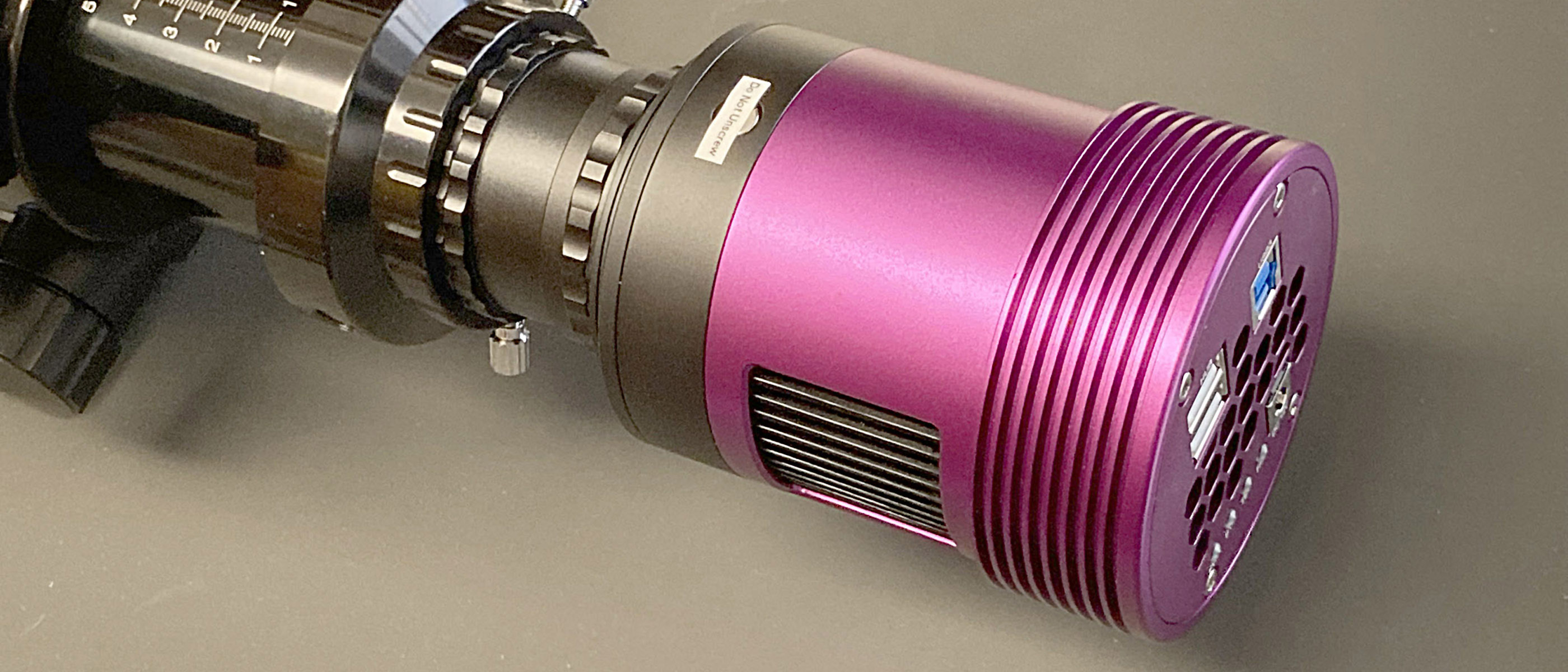History Channel team finds large piece of space shuttle Challenger on ocean floor
The TV documentary team was searching for a downed World War II aircraft when it discovered the NASA artifact.

One the largest pieces of NASA's fallen space shuttle Challenger has been discovered on the ocean floor by a TV documentary team searching for a downed World War II aircraft.
The artifact, which today remains where it was found by the crew filming The History Channel's new series "The Bermuda Triangle: Into Cursed Waters," was positively identified by NASA based upon the item's modern construction and presence of 8-inch (20 centimeters) square thermal protection (heat shield) tiles. The segment of Challenger was found in waters off Florida's Space Coast, well northwest of the area popularly known as the Bermuda Triangle.
"This discovery gives us an opportunity to pause once again, to uplift the legacies of the seven pioneers we lost and to reflect on how this tragedy changed us," said NASA Administrator Bill Nelson in a statement issued on Thursday (Nov. 10). "While it has been nearly 37 years since seven daring and brave explorers lost their lives aboard Challenger, this tragedy will forever be seared in the collective memory of our country. For millions around the globe, myself included, Jan. 28, 1986, still feels like yesterday."
Related: Space shuttle Challenger and the disaster that changed NASA forever
The search for Challenger
The space shuttle Challenger broke apart 73 seconds into its 10th launch after seals in one of the vehicle's two solid rocket boosters failed. NASA's STS-51L crew, including commander Francis "Dick" Scobee, pilot Mike Smith, mission specialists Ron McNair, Ellison Onizuka and Judy Resnik, payload specialist Greg Jarvis and Teacher-in-Space Christa McAuliffe were killed in the aftermath of the malfunction.

A major search and salvage effort was organized in the wake of the tragedy, the largest ever conducted by the U.S. Navy and U.S. Coast Guard at that time. The operation involved thousands of people, 16 surface vessels, a nuclear-powered research submarine and several robotic and crewed submersibles systematically inspecting more than 486 square nautical miles (1,666 square kilometers) of ocean floor in depths ranging from 10 to over 1,200 feet (3 to 365 meters).
After seven months, 167 pieces of the shuttle, weighing a total of 118 tons, were recovered. The debris represented 47% of the orbiter Challenger, 33% of the external tank, 50% of the two solid rocket boosters and between 40% and 95% of the mission's three primary payloads (an inertial upper stage, a tracking and data relay satellite and an astronomical tool to observe Halley's Comet).
Get the Space.com Newsletter
Breaking space news, the latest updates on rocket launches, skywatching events and more!
After being analyzed to learn what caused the failure, the wreckage was placed into two silos — Complex 31 and 32 at the Cape Canaveral Air Force Station (now Space Force Station) — each 78 feet deep by 12 feet in diameter (24 by 4 m), which had previously supported Minuteman missiles up until 1970. The silos were not considered burial sites or a memorial for Challenger, but rather a storage site, and in the years since, as additional pieces have washed up on shore, they have been added to the archive.
Related: 35 years later, the lessons learned from the fatal Challenger shuttle disaster echo at NASA

In 2015, for the first and only time to date, NASA placed a large section of space shuttle Challenger's fuselage on public display as part of "Forever Remembered," a permanent memorial to the nation's fallen shuttle crews at the Kennedy Space Center Visitor Complex in Florida.
Unexpected find
The History Channel's find is the first major discovery of wreckage from the STS-51L disaster in more than 25 years.
"In reviewing the footage that the team provided, we can see a section roughly 15 by 15 feet [4.5 by 4.5 m]. However, we did note that the item does extend deeper into the sand, so the true size is hard to determine at this point. But I am rather confident that it is one of the largest pieces ever found of Challenger," Mike Cianelli, program manager of NASA's Apollo, Challenger and Columbia Lessons Learned Program, said in a video statement released by NASA.
The History Channel film crew did not set out to find a piece of Challenger. Rather, in March 2022, the team embarked on a series of scout dives to investigate several suspected wreck targets off the coast of Florida, with one of those targets being outside of the Bermuda Triangle, offshore from Cape Canaveral. The divers were initially looking for the wreck of a PBM Martin Mariner rescue plane that disappeared without a trace on Dec. 5, 1945, while searching for five U.S. Navy torpedo bombers on a mission code-named Flight 19 that had also disappeared earlier that day.
Instead of World War II-era plane debris, the team discovered a modern-looking aviation structure. After consulting with an outside expert and completing a second dive in May 2022, the TV film crew presented the evidence to former NASA astronaut Bruce Melnick, who suspected it was a piece of the Challenger. Based on that information, the series' producers brought the find to the attention of NASA and in August 2022, Ciannilli confirmed it was a significant remnant of the fallen shuttle.
"The significance of this large section of Challenger's structure was readily apparent," underwater explorer Mike Barnette, who led the History Channel team that made the discovery, said in a statement released by A+E Networks. "We recognized the necessity of bringing this find to the immediate attention of NASA. The site, which is outside of the Bermuda Triangle off the Florida coast, marks the loss of seven brave astronauts — fellow explorers."
"One of the very first things that we did is, we notified all the families of the space shuttle Challenger so they are aware of this," said Ciannilli.
Keeping the memory alive
The first episode of The History Channel's six-part series "The Bermuda Triangle: Into Cursed Waters," scheduled to premiere on Nov. 22, chronicles the Challenger find, from first dive to the teams' meeting at NASA.
"While the remarkable discovery of wreckage from Challenger was not part of our diving team's initial mission exploring the Bermuda Triangle, the find's historical significance cannot be understated," said Eli Lehrer, executive vice president and head of programming for The History Channel. "The Challenger is a vital part of our nation's history, and we are honored to bring this important finding to light."

All of the debris from the fallen space shuttle Challenger remains U.S. government property. NASA is currently considering what additional actions it may take regarding the History Channel's find that will properly honor the legacy of the fallen astronauts and the families who loved them.
"Currently at this time we're reviewing options of how to move forward after this discovery. But I can assure you NASA will put the memory and legacy of the crew and the families foremost in its thoughts and planning as we move forward," said Ciannilli. "It's very important to keep the memory of the crew and the mission alive."
Follow collectSPACE.com on Facebook and on Twitter at @collectSPACE. Copyright 2022 collectSPACE.com. All rights reserved.
Join our Space Forums to keep talking space on the latest missions, night sky and more! And if you have a news tip, correction or comment, let us know at: community@space.com.

Robert Pearlman is a space historian, journalist and the founder and editor of collectSPACE.com, a daily news publication and community devoted to space history with a particular focus on how and where space exploration intersects with pop culture. Pearlman is also a contributing writer for Space.com and co-author of "Space Stations: The Art, Science, and Reality of Working in Space” published by Smithsonian Books in 2018.In 2009, he was inducted into the U.S. Space Camp Hall of Fame in Huntsville, Alabama. In 2021, he was honored by the American Astronautical Society with the Ordway Award for Sustained Excellence in Spaceflight History. In 2023, the National Space Club Florida Committee recognized Pearlman with the Kolcum News and Communications Award for excellence in telling the space story along the Space Coast and throughout the world.











